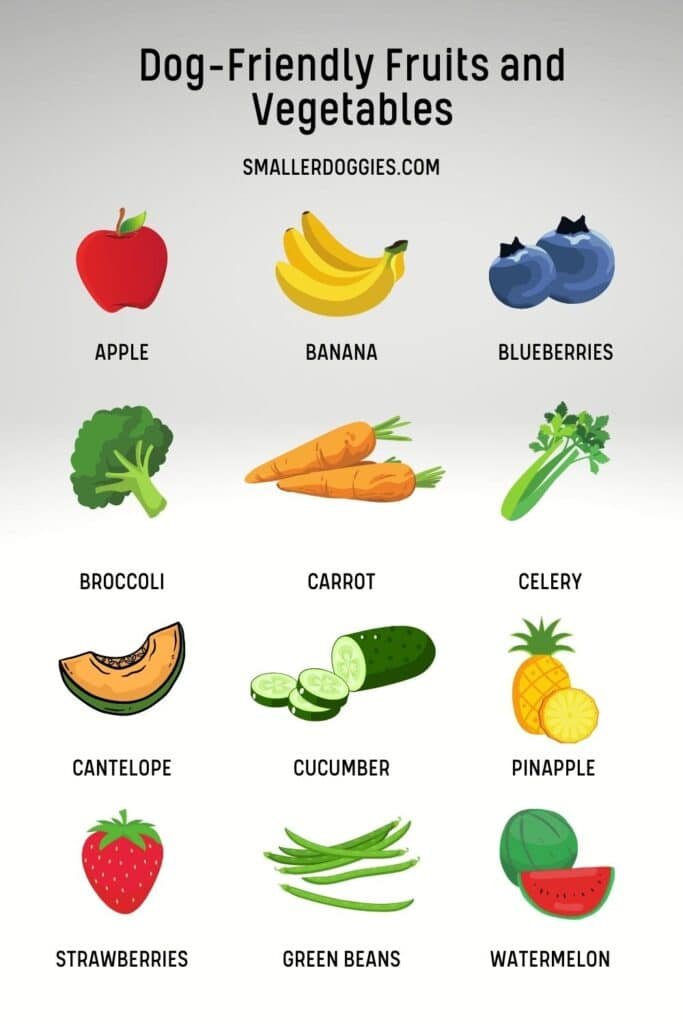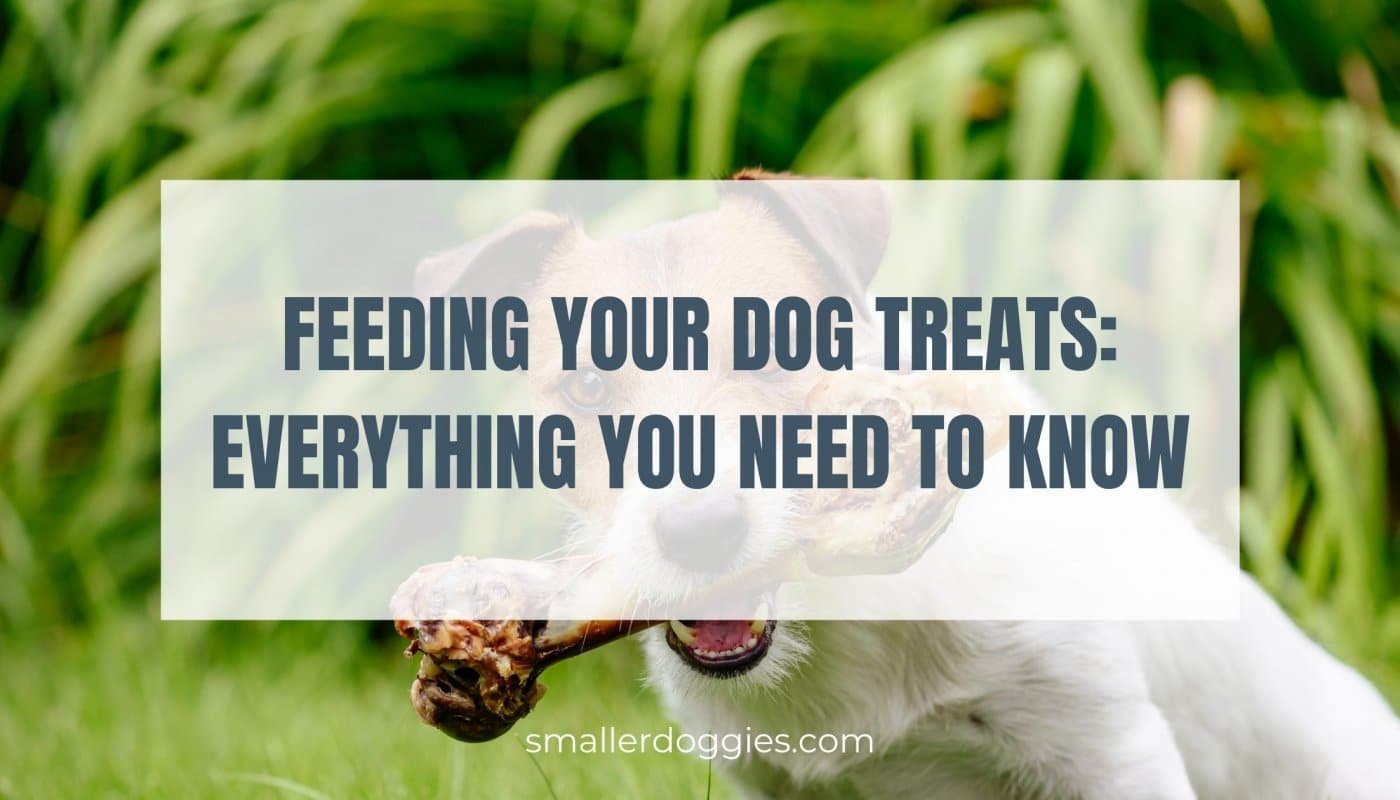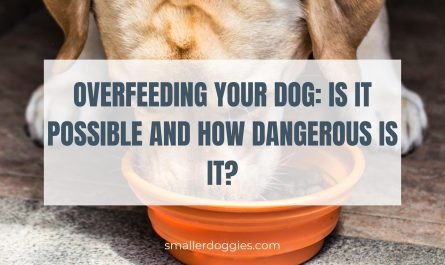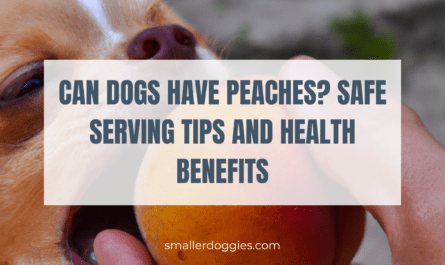Post Disclaimer
This post may contain affiliate links. If you use these links to buy something we earn a commission at no extra cost to you. Smaller Doggies is supported by its audience, Thank you!
Every dog owner loves to give their pup a treat, but how much do you know about them? Dog treats are these chewy and tasty snacks that are not only unique because they taste great (well, most of the time), but they’re also excellent at strengthening your bond with your furry friend. However, can training your pup to behave using treats also have a downside?
In this article, we will look at everything you need to know about feeding your dog treats and how to do it correctly.
Table of Contents
- Are dog treats good for dogs?
- Are dog treats healthy?
- How many dog treats can you give per day?
- When is the best time to give your dog treats?
- Can you give human foods as dog treats?
- At what age can I start giving my puppy treats?
- What type of dog treats can puppies have?
- Which store-bought dog treats are bad for dogs
- Can I make my own dog treats?
Are dog treats good for dogs?
You may be wondering if dog treats are suitable for dogs? The answer to this one is a resounding yes! Dog treats are a great way to give your pup a little something special and aid in training them how to behave.
Just remember that moderation is essential when giving treats to dogs, like with people. The treats should be no more than 10% of your dog’s calorie intake. Too many treats can lead to obesity and other health problems, so it’s essential to take out that amount of treats your dog has received throughout the day at dinner time.
Are dog treats healthy?
The answer is both yes and no – it depends on the treat in question. Generally speaking, most dog treats are made with natural ingredients and are pretty healthy for your pup. However, it’s important to read the ingredient list before buying any treats to make sure that there aren’t any artificial additives or chemicals in them.
If you’re ever in doubt, it’s always best to ask your vet, as they will be able to recommend specific treats that are best for your dog’s health.
How many dog treats can you give per day?
So you have your treats, but what is the right amount to be feeding your pup? Again, this answer will vary depending on the dog and the type of treat being given.
As a general rule, small dogs shouldn’t be given more than 10 treats per day, while larger breeds should only get 5 or fewer. Have a look at the recommended amount at the back of the packet, as that should be a good guide for you to follow.
Also, keep in mind that some dog treats are high in calories and fat while others contain a lesser amount; this should also be considered when feeding your dog.
When is the best time to give your dog treats?
Dog treats are an excellent way to reward your pup for good behavior. However, it’s important to use them only when training your pet and never as a substitute for their regular meals. When the dog is quiet, a treat should be provided. Wait until they are sitting or lying down and calmly await your command.
Can you give human foods as dog treats?
This is tricky as some human foods are safe for dogs to eat while others are not. It’s always best to ask your vet if you’re unsure about what’s safe for your pup. Generally speaking, it’s a good idea to avoid giving your dog processed human foods like pizza, hamburgers, or hot dogs. You can, however, offer your dog some fruits and vegetables as they make wonderful treats for dogs. The best part is, you may have them already in your kitchen!
Here is a list of fruit and vegetables you can start with, cut up, and use as a healthy low-carb treat option for your dog. It is recommended to give small portions and monitor your dog when trying new foods just in case it does not agree with your dog.

At what age can I start giving my puppy treats?
Puppies are just as eager to please their parents as they are to receive treats! You can start training your pup with treats at around 8-10 weeks old, although some recommend starting training as young as 6 weeks. Just make sure that the treats you’re using are appropriate for your puppy’s age and not too big or hard, which could potentially cause damage to their growing teeth or result in choking.
What type of dog treats can puppies have?
As your puppy starts to grow, you’ll want to start giving them treats that are specifically designed for their age. Puppy treats are usually smaller and softer than those given to adult dogs as they are still growing.
If you want to use dog-friendly human foods you may already have in the kitchen, you can chop up some lean meat like cooked chicken, beef, or turkey. Make sure these are free from any bones. Chop them up small enough for your dog to chew with no complications. You can also try chopped cooked or raw carrots or broccoli and some fruits like apples, bananas, or watermelon with the pits/seeds removed as they can be toxic to your dog.
FAQ
Which store-bought dog treats are bad for dogs
As with anything, it’s important to read the ingredients label of any store-bought dog treats before purchasing them. Some treats can contain high levels of sodium, sugar, or fat, which isn’t good for your dog/pup. Also, some treats are made with artificial flavors and colors that may harm your dog’s health. Always try and go for treats that are made with natural ingredients.
Can I make my own dog treats?
Of course! You can make all sorts of different dog treats at home with just a few simple ingredients. There are plenty of recipes available online, or you could try making some of your pup’s favorite foods into a healthy treat!
*Please note! There are a few types of human foods that you should avoid giving your dog/pup. These include anything that is high in sugar, processed, or unhealthy for dogs, like chocolate, onions, grapes, and raisins. Even though they may seem like harmless snacks to us, these foods can cause serious health problems for our canine friends.
Learning how to properly feed your dog treats can be a challenge. What type of dog treat is best for my dog? How much should I give him each day? Which types are healthy and which ones aren’t so great?
These questions often plague pet owners who want the very best for their furry friends but don’t know where or how to start looking.
We hope our guide has helped you learn more about what kinds of dog treats there are, and we encourage you to ask us any other questions that come up as well!
Do you buy your dog treats, or do you make them yourself? Let us know in the comments below!
What are your views on this? Share in the comments bar below.



